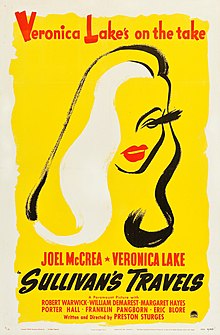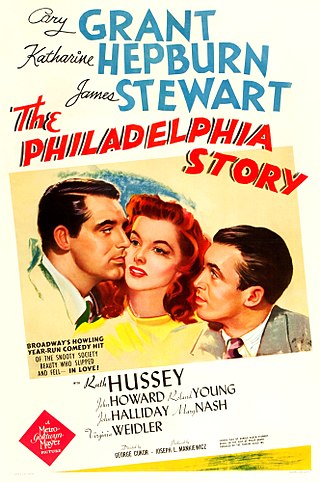
The Philadelphia Story is a 1940 American romantic comedy film starring Cary Grant, Katharine Hepburn, James Stewart and Ruth Hussey. Directed by George Cukor, the film is based on the 1939 Broadway play of the same name by Philip Barry about a socialite whose wedding plans are complicated by the simultaneous arrival of her ex-husband and a tabloid magazine journalist. The socialite, played by Hepburn in both productions, was inspired by Helen Hope Montgomery Scott (1904–1995), a Philadelphia heiress who had married Barry's friend.

City Lights is a 1931 American synchronized sound romantic comedy-drama film written, produced, directed by, and starring Charlie Chaplin. While the film has no audible dialog, it was released with a synchronized musical score with sound effects. The story follows the misadventures of Chaplin's Tramp as he falls in love with a blind girl and develops a turbulent friendship with an alcoholic millionaire.

The Gold Rush is a 1925 American silent comedy film written, produced, and directed by Charlie Chaplin. The film also stars Chaplin in his Little Tramp persona, Georgia Hale, Mack Swain, Tom Murray, Henry Bergman and Malcolm Waite.

The Lady Eve is a 1941 American screwball comedy film written and directed by Preston Sturges and starring Barbara Stanwyck and Henry Fonda. The film is based on a story by Monckton Hoffe about a mismatched couple who meet on board an ocean liner. In 1994, The Lady Eve, which is included on many all-time "Top 100" lists, was selected for preservation in the United States National Film Registry by the Library of Congress as being "culturally, historically, or aesthetically significant".
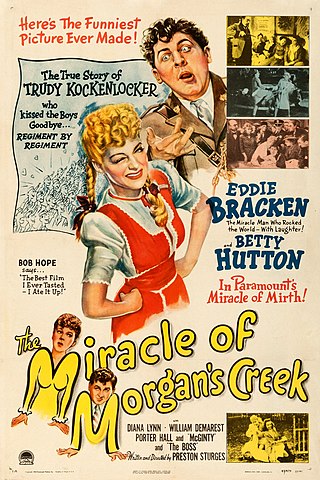
The Miracle of Morgan's Creek is a 1944 American screwball comedy film written and directed by Preston Sturges, starring Eddie Bracken and Betty Hutton, and featuring Diana Lynn, William Demarest and Porter Hall. Brian Donlevy and Akim Tamiroff reprise their roles from Sturges' 1940 film The Great McGinty. Set against the backdrop of World War II-era America, its plot follows a wayward young woman who, after attending a party with soldiers in her small town, awakens to find herself married and pregnant, with no memory of her new suitor's identity.

Road to Morocco is a 1942 American comedy film starring Bing Crosby, Bob Hope and Dorothy Lamour, and featuring Anthony Quinn and Dona Drake. Written by Frank Butler and Don Hartman and directed by David Butler, it’s the third of the "Road to ..." films. It was preceded by Road to Zanzibar (1941) and followed by Road to Utopia (1946). The story is about two fast-talking guys cast away on a desert shore and sold into slavery to a princess. In 1996, Road to Morocco was selected for preservation in the United States National Film Registry by the Library of Congress as being "culturally, historically, or aesthetically significant".

To Be or Not to Be is a 1942 American black comedy film, directed by Ernst Lubitsch, starring Carole Lombard and Jack Benny, and featuring Robert Stack, Felix Bressart, Lionel Atwill, Stanley Ridges and Sig Ruman. The plot concerns a troupe of actors in Nazi-occupied Warsaw who use their abilities at disguise and acting to fool the occupying troops. It was adapted by Lubitsch (uncredited) and Edwin Justus Mayer from the story by Melchior Lengyel. The film was released one month after actress Carole Lombard was killed in an airplane crash. In 1996, it was selected for preservation in the United States National Film Registry by the Library of Congress as being "culturally, historically, or aesthetically significant."
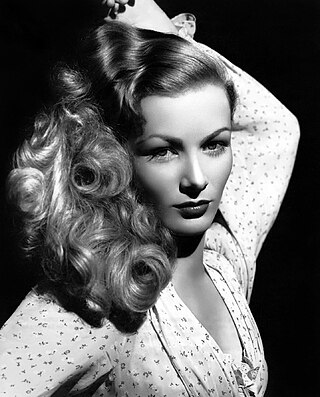
Constance Frances Marie Ockelman, known professionally as Veronica Lake, was an American film, stage, and television actress. Lake was best known for her femme fatale roles in film noirs with Alan Ladd during the 1940s, her peek-a-boo hairstyle, and films such as Sullivan's Travels (1941) and I Married a Witch (1942). By the late 1940s, Lake's career began to decline, due in part to her alcoholism. She made only one film in the 1950s, but made several guest appearances on television. She returned to the big screen in the film Footsteps in the Snow (1966), but the role failed to revitalize her career.

Sons of the Desert is a 1933 American pre-Code comedy film starring Laurel and Hardy. Directed by William A. Seiter, it was released in the United States on December 29, 1933. In the United Kingdom, the film was originally released under the title Fraternally Yours.

Preston Sturges was an American playwright, screenwriter, and film director.

The Great McGinty is a 1940 American political satire comedy film written and directed by Preston Sturges, starring Brian Donlevy and Akim Tamiroff and featuring William Demarest and Muriel Angelus. It was Sturges's first film as a director; he sold the story to Paramount Pictures for just $10 on condition he direct the film. Sturges received an Oscar for Best Original Screenplay.

Joel Albert McCrea was an American actor whose career spanned a wide variety of genres over almost five decades, including comedy, drama, romance, thrillers, adventures, and Westerns, for which he became best known.

Carl William Demarest was an American actor, known especially for his roles in screwball comedies by Preston Sturges and as Uncle Charley in the sitcom My Three Sons from 1965-72. Demarest, who frequently played crusty but good-hearted roles, was a prolific film and television actor, appearing in over 140 films, beginning in 1926 and ending in the late 1970s. Before his career in movies, he performed in vaudeville for two decades.
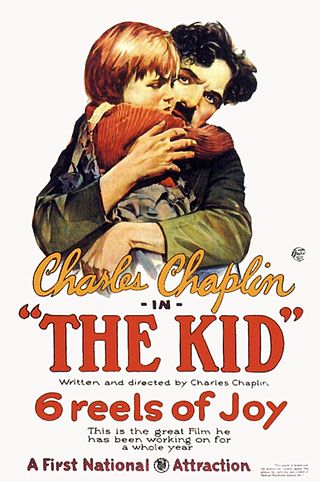
The Kid is a 1921 American silent comedy-drama film written, produced, directed by and starring Charlie Chaplin, and features Jackie Coogan as his foundling baby, adopted son and sidekick. This was Chaplin's first full-length film as a director. It was a huge success and was the second-highest-grossing film in 1921. Now considered one of the greatest films of the silent era, it was selected for preservation in the United States National Film Registry by the Library of Congress in 2011.
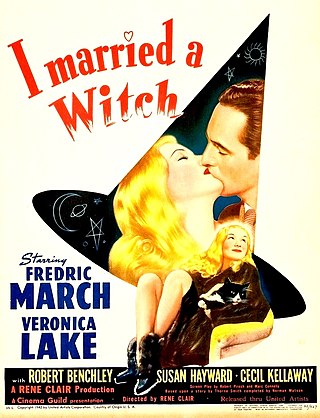
I Married a Witch is a 1942 American romantic comedy fantasy film, directed by René Clair, and starring Veronica Lake as a witch whose plan for revenge goes comically awry, with Fredric March as her foil. The film also features Robert Benchley, Susan Hayward and Cecil Kellaway. The screenplay by Robert Pirosh and Marc Connelly and uncredited other writers, including Dalton Trumbo, is based on the 1941 novel The Passionate Witch by Thorne Smith, who died before he could finish it; it was completed by Norman H. Matson.
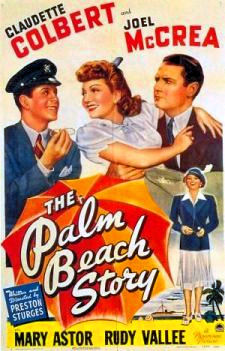
The Palm Beach Story is a 1942 screwball comedy film written and directed by Preston Sturges, and starring Claudette Colbert, Joel McCrea, Mary Astor and Rudy Vallée. Victor Young contributed the musical score, including a fast-paced variation of the William Tell Overture for the opening scenes. Typical of a Sturges film, the pacing and dialogue of The Palm Beach Story are very fast. The film was distributed by Paramount Pictures.
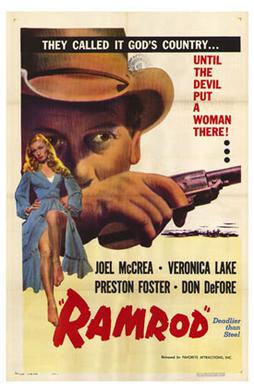
Ramrod is a 1947 American Western film directed by Andre de Toth and starring Joel McCrea, Veronica Lake, Preston Foster and Don DeFore. This cowboy drama from Hungarian director de Toth was the first of several films based on the stories of Western author Luke Short. De Toth's first Western is often compared to films noir released around the same time. Leading lady Veronica Lake was then married to director de Toth. The supporting cast features Donald Crisp, Charles Ruggles, Lloyd Bridges and Ray Teal.
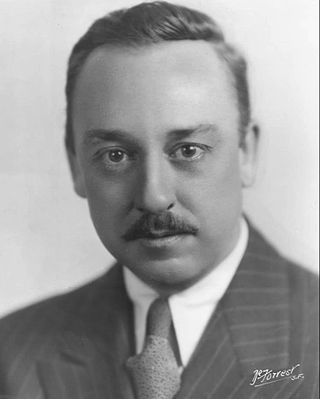
Clifford Porter Hall was an American character actor known for appearing in a number of films in the 1930s and 1940s. Hall typically played villains or comedic incompetent characters.
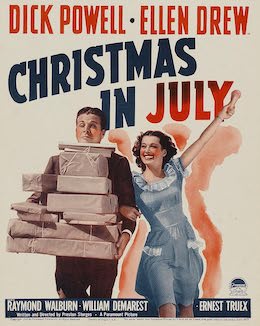
Christmas in July is a 1940 American screwball comedy film written and directed by Preston Sturges, and starring Dick Powell and Ellen Drew.

Robert Greig was an Australian-American actor who appeared in more than 100 films between 1930 and 1949, usually as the dutiful butler. Born Arthur Alfred Bede Greig, he was the nephew of Australian politician and solicitor William Bede Dalley. He was commonly known as "Bob".
